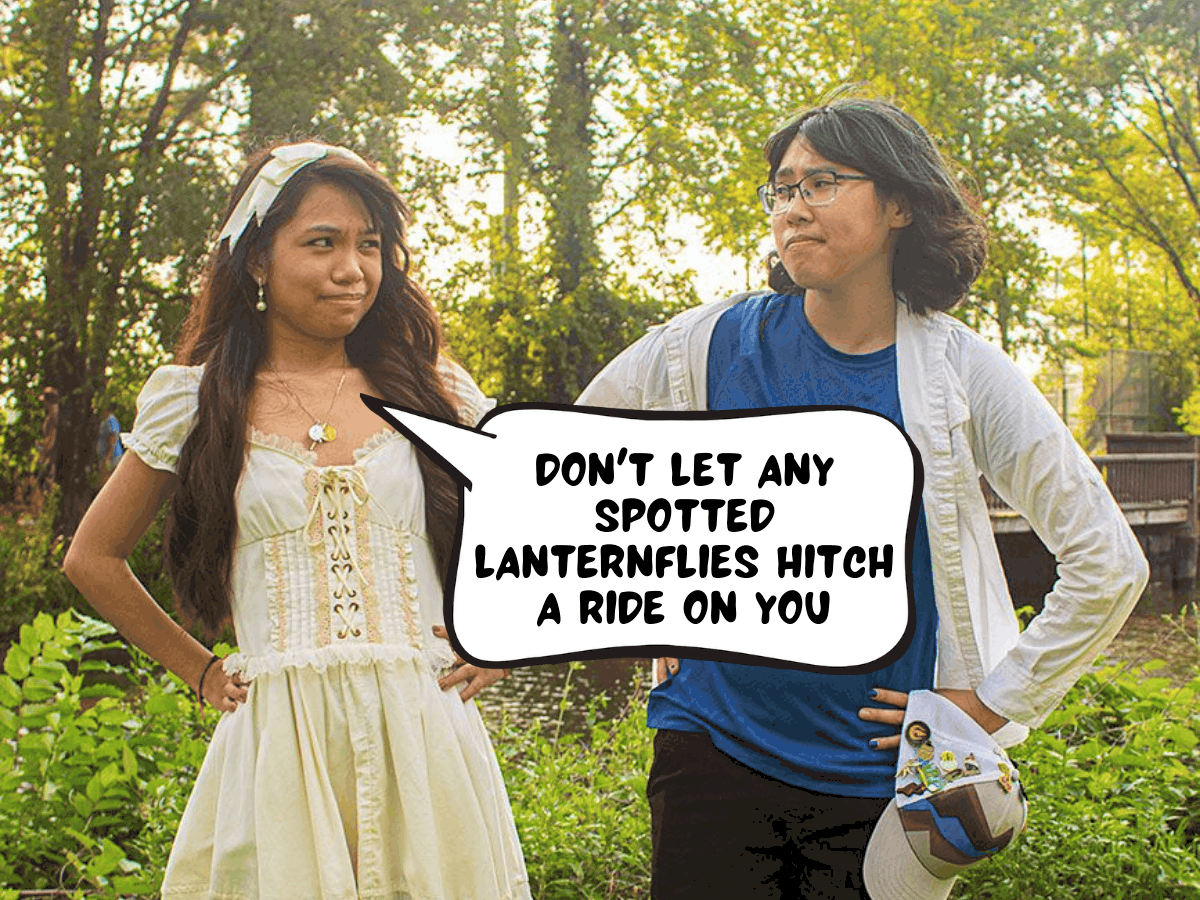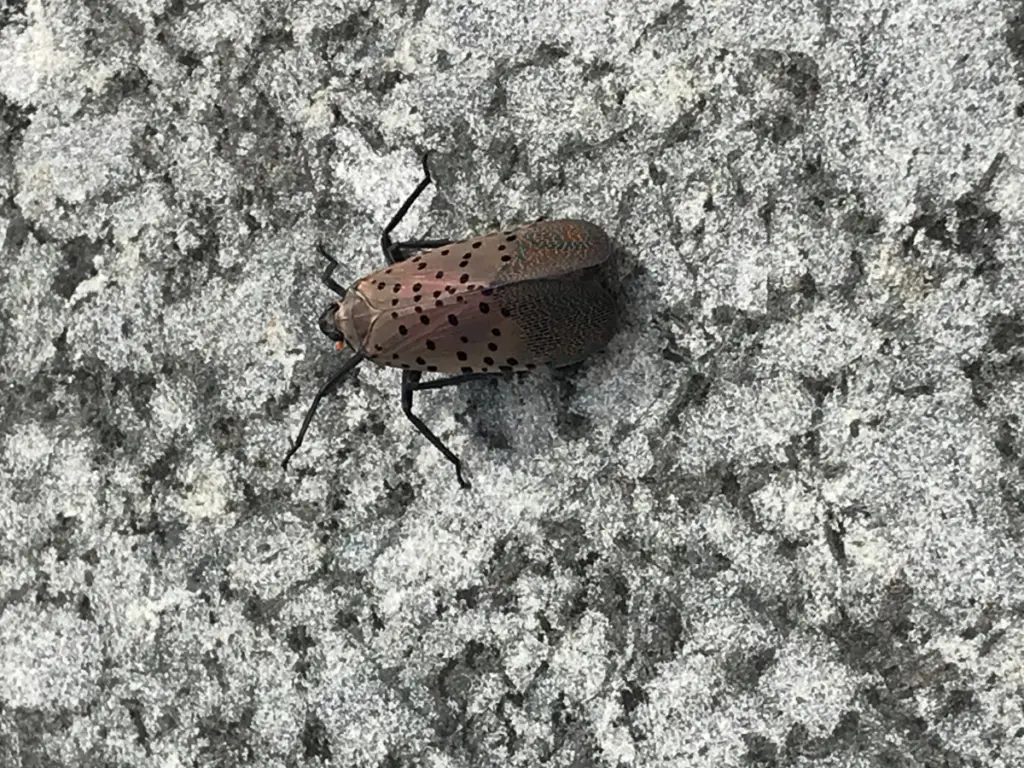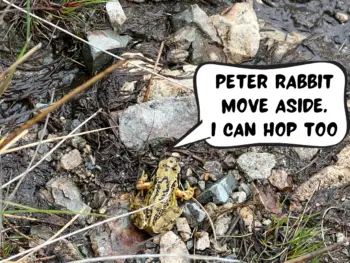
Posted: October 13, 2021
For a Saturday in the summer, it was too silent. Under the stifling August sun, a chill was sent down my sweating back.
My friend, Athena from nearby Jersey City, and I walked through the meandering grassy hills and green trees of Newark’s Branch Brook Park. Our destination was North America’s fifth-largest cathedral, the Cathedral Basilica of the Sacred Heart. This area attracted both locals and tourists alike for those seeking a peaceful day out in the park and a visit to a grand church.
Except today. As the Sacred Heart emerged above the trees, the quiet ensued. “OK, this is weird. Lots of people usually come here,” said Athena.
“Where was everyone?” I asked.
Something flickered on the concrete leading to the Sacred Heart. I glanced down.
A bug as large as my thumb knuckle made a series of forward hops. Its gray outer wings and little black spots blended in too well with the concrete. I squatted down, using my body as a blockade in case Athena accidentally stepped on the poor thing — or was grossed out by it and wanted to kill it. I wanted to convince my city slicker friend that bugs should be respected and deserve to live. Pointing at the bug, I said, “Awww, look at the cute little thing! The blue colors underneath the wing flaps are so shiny.”
“Hmpt,” Athena said. Indifference was better than disgust.
We stepped over the bug. Whew, another bug’s life saved, I thought, but forgot all about it as we approached the tan stone towers of the church soaring into the sky. The heat forced me and my friend to seek relief into the Sacred Heart.

***
Fast-forward a few days. Athena sent me some startling WhatsApp messages.
“Do you remember the spotted lanternfly we saw the other day in Newark?”
Oh, so that’s what they’re called.
“Well, they’re an invasive species.”
NO.
Athena continued, “I suddenly remembered the story one of my classmates, Justine, said. It was likely that in 2012, somebody in Pennsylvania accidentally introduced the bugs to the East Coast. Their eggs were on stone shipments from China. Then, those lanternflies infested her hometown. Her county, Warren in New Jersey, and a few others were quarantined when they started becoming a problem.
“Today, I was like, ‘HOLDUP. I HAVE NEVER SEEN THEM BEFORE UNTIL THIS SUMMER WHEN WE WERE IN NEWARK.’ I DIDN’T PROCESS THAT UNTIL NOW.”

I broke more bad news to her about this past afternoon in Bayonne, an industrial port city on the edge of the Hudson River. “I saw another one crawling on the ground at Bayonne’s 9/11 Teardrop Memorial.” Behind this site was a backdrop of the Downtown Manhattan skyline. This bug almost made it to New York City.
Actually, it already has. New York State’s Integrated Pest Management Program’s map range, updated in August 2021, reported that in addition to Pennsylvania and New Jersey, the bug has infested various parts of New York, Connecticut, Delaware, Maryland, West Virginia, and Virginia, making it as far west as Ohio and Indiana.
As if the East Coast needs another invasive species. Hit the Atlantic Ocean between Florida and North Carolina, and you might find the invasive lionfish. Or head down south to Florida, and you could come across the unwanted Burmese python. Both are guilty of stealing space and food from local critters. It doesn’t matter if the invasive species is an insect, fish, or reptile — they disrupt the native ecosystem and screw up the food chain.
Athena added, “Apparently, spotted lanternflies are super hard to get rid of like roaches, AAAAAAHHHH. The thing is, there aren’t many natural predators in the US. These fuckers will damage trees and vegetation too.”
According to Pennsylvania State University’s College of Agricultural Sciences, spotted lanternflies suck on the sap of many plants with economic importance, including black walnut, grapevines, and maple trees. This can sicken the trees and even kill them. If that’s not enough, during feeding time, the bugs leave behind honeydew, which encourages a fungus, sooty mold, to cover the plant.
The environmentalist in me was devastated. Not only was the bug wreaking havoc on plants and local economies in the Northeast US, it led to a ruined mission to nudge my city slicker friend into empathizing with bugs.
Because of their urban upbringing, city folks may not be used to noticing the natural world around them. On top of that, people are quick to be grossed out by bugs, which can easily lead others to feel the same way.
Athena, an urban girl since birth, didn’t spend her days observing or interacting with animals, much less bugs. She had no previous experiences from which she could derive love or understanding for bugs. So, her natural reaction was to be disgusted, whether talking about bugs or seeing them.
But I grew up in rural Oklahoma around animals, from rabbits to squirrels to cows to snakes. Nostalgia washes over me when I remember my days playing with June beetles in the garage and front porch. I let them crawl on my hands and arms, their pointy legs tickling my skin.
I cared about these bugs very much. Whenever loads of brown shells from dead June beetles covered my front porch, I was sad that they lived such short lives compared to humans. I hoped that their meager days felt fulfilling to them.
I could express my affection for any wildlife Athena and I encountered, including bugs. If she saw how much her small-town friend cared for bugs, maybe, just maybe, it would foster in her a new understanding for them. But thanks to the spotted lanternfly, my mission backfired. I admitted to Athena, “And to think in Newark, I doted on the bug’s cuteness. Put it in the right context, now I’m like, ‘Oh shit.'”
It didn’t help that she was having leftover disgust from a horror game’s creepy bug infestation in a house on the bayou. It was as if it leaped over into real life with this bug invasion over her urban hometown in New Jersey. She ended with the protagonist’s quote from Resident Evil 7: “I’m sick of bugs.”
I have an unwavering empathy for insects — but the spotted lanternfly must be an exception.
It was hard for me, though. I thought of the bug’s innocence. Did the spotted lanternfly know the nuisance it was causing? I doubted it. It was simply trying to survive.
Still, it didn’t excuse the fact that it was guilty of killing trees and harming the local agricultural economy in the Northeast US.

I hated killing bugs. I didn’t want to end a life. But I cared for the health of a local ecosystem more than the life of a bug that never belonged. Keeping in mind New Jersey’s Department of Agriculture’s campaign to kill the bug on sight, I would do it — just without looking.
The message has even spread on social media, despite Athena at first hesitating to post pictures of the spotted lanternfly since she knew “a lot of people hate bugs.” I wanted to believe that that same hatred was fueled by people caring for the well-being of their local environment. It drove people to spread the word online. I soon saw Athena’s Instagram story reshare information about the bug. Even the City of Jersey City’s Instagram story reshared a photo of the bug on a tree in their beloved green space, Lincoln Park, with the caption, “Squash on sight!”
Maybe I couldn’t convince Athena to like bugs. But seeing that urban folks like her did care about protecting their local outdoor spaces comforted me. The spotted lanternfly invasion, as terrible as it was, reminded people about the fragility of our environment and how we should take care of it. And that’s the bare minimum I ask of everyone.

***
“Make sure you don’t accidentally bring any lanternflies back to California in your backpack,” Athena messaged me.
I had to check, now that I had come across a horrid sight on my last day in the Jersey City area.
I was walking on an overpass in nearby Secaucus when I must have seen at least 15 of those little “fuckers” parked on a metal fence spanning the road.
I felt defeated. It was another hot, sweaty August weekend. The sidewalk concrete baked me as I trudged along a suburban road to my transit bus stop, where I needed to catch my air-conditioned bus back to Jersey City. The kayaking excursion on the Hackensack River that morning sucked my remaining energy.
Even if I tried smashing those bugs with my shoes, they could easily fly through the fence grating and escape. They were resting sideways, upside-down, at all angles that seemed impossible for me to smack.
Within a week. Newark, Bayonne, and now Secaucus. We meet again. I stared at the bugs for half a minute. Content on their protective perch, the bugs taunted me, as if to say, “Bitch, do you really think killing all of us on this fence will end our invasion over New Jersey, over the Northeast US?”
I’ll report your little asses to New Jersey’s Department of Agriculture. Then, I’ll make sure none of you hitchhike to California, I thought hours later as I started my careful packing for tomorrow’s flight home.
Want to visit Jersey City? Recommended reading: 15 Things to See and Do in Jersey City, New Jersey
Share on Pinterest!














 Travelers with a Disability: How to Get an Access Pass to Enter National Parks for Free
Travelers with a Disability: How to Get an Access Pass to Enter National Parks for Free